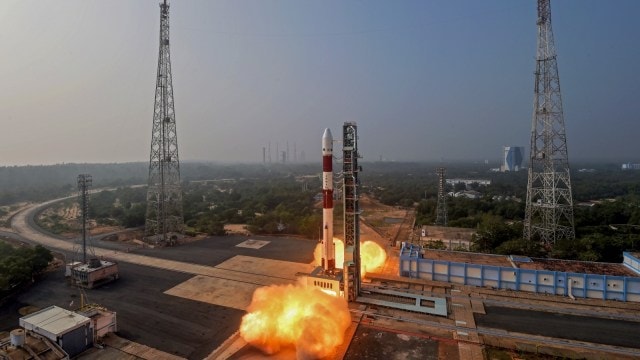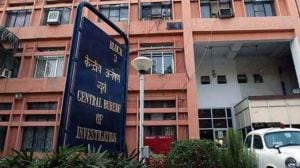- India
- International
ISRO to test Gaganyaan parachutes by dropping module from chopper
The Integrated Air Drop Test (IADT) will see a Chinook helicopter dropping the crew module from a height of around 4-5 km.
 This will be the first in a series of IADT to test the parachute system under off-nominal conditions such as one parachute not opening, both parachutes not opening, or delayed deployment of the parachutes.
This will be the first in a series of IADT to test the parachute system under off-nominal conditions such as one parachute not opening, both parachutes not opening, or delayed deployment of the parachutes.The Indian Space Research Organisation (ISRO) is likely to undertake an important test under the Gaganyaan mission to check the parachute system of the crew module in the next few days, according to officials in know of the matter. The Integrated Air Drop Test (IADT) will see a Chinook helicopter dropping the crew module from a height of around 4-5 km.
“The test is likely to be conducted in the next two or three days. The first IADT will test the parachute system under nominal conditions, meaning it will mimic the process of splashdown of the crew module when both parachutes open in a timely manner,” the official said.
This will be the first in a series of IADT to test the parachute system under off-nominal conditions such as one parachute not opening, both parachutes not opening, or delayed deployment of the parachutes.
After the splashdown of the crew module—the module that will seat the three Indian astronauts —another helicopter will locate the crew module. The Navy will then recover the crew module and bring it to the Chennai coast, according to officials.
The splashdown and recovery of the crew module is also an important step, especially since the crew module turned upside down during the first test vehicle mission last October. The space agency will also undertake test vehicle missions— where a single stage rocket carries the modules several kilometres in space to test all systems —before the first unmanned mission. “This is unchartered territory. We do not know how many such tests will be needed. It will depend on findings from these tests,” said the official.

The crew module will be the pressurised cabin which will carry the three astronauts to space and back.
While the current tests are only with the crew module, for the actual flight, the crew module will be attached with a service module that will house all support systems such as the propulsion system.
May 21: Latest News
- 01
- 02
- 03
- 04
- 05






























